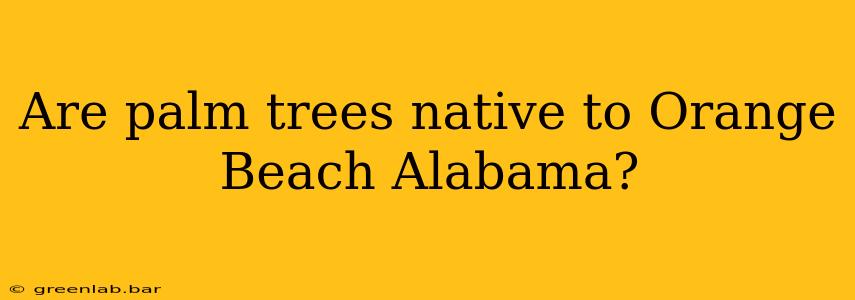Orange Beach, Alabama, with its stunning Gulf Coast location, is undeniably associated with palm trees. Their iconic silhouette contributes significantly to the area's picturesque landscape. But are these graceful plants actually native to the region? The answer is more nuanced than a simple yes or no.
Understanding Native vs. Introduced Species
Before diving into the specifics of Orange Beach, let's clarify the difference between native and introduced plant species. A native plant is one that occurs naturally in a particular region, having evolved there over time without human intervention. An introduced species, also known as an exotic or non-native species, is one that has been brought to a region by humans, either intentionally or unintentionally.
While many species thrive in their new environments, introduced species can sometimes outcompete native plants, disrupting the delicate balance of the ecosystem.
Palm Trees in Alabama: A Closer Look
Alabama's climate, particularly along the coast, is generally favorable for certain palm tree species. However, the state's native palm tree diversity is surprisingly limited. You're unlikely to find the towering coconut palms often associated with tropical beaches naturally growing in Orange Beach.
The most likely native palm you might encounter in Alabama, including areas like Orange Beach, is the sabal palm (Sabal minor), also known as the dwarf palmetto. These are smaller, shrub-like palms, often found in coastal areas and wetlands, and are considerably less dramatic than their taller, more tropical counterparts.
The Prevalence of Non-Native Palms in Orange Beach
The palm trees that dominate the Orange Beach landscape are largely non-native species. These have been planted ornamentally, adding to the aesthetic appeal of the area and contributing to its tropical ambiance. Commonly seen introduced species include various types of date palms, royal palms, and potentially others depending on landscaping choices. These species are well-suited to the warm, humid climate and sandy soil.
Ecological Considerations
The extensive planting of non-native palm trees in Orange Beach, while enhancing the visual appeal, presents some ecological considerations. The introduction of non-native species can potentially impact native plant communities and wildlife that have adapted to the existing ecosystem. Maintaining a balance between aesthetic appeal and ecological responsibility is a crucial aspect of coastal landscaping.
Conclusion: A Landscape Shaped by Human Influence
While a few native palm species might occur in the Orange Beach area, the majority of the palm trees you see are non-native species, deliberately planted to create a visually stunning coastal setting. Understanding this distinction is important for appreciating the unique character of the region's flora and the role of human influence in shaping its landscape. The beauty of Orange Beach’s palm-lined shores is, therefore, a testament to both natural suitability and careful landscaping practices.

